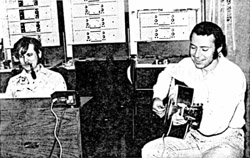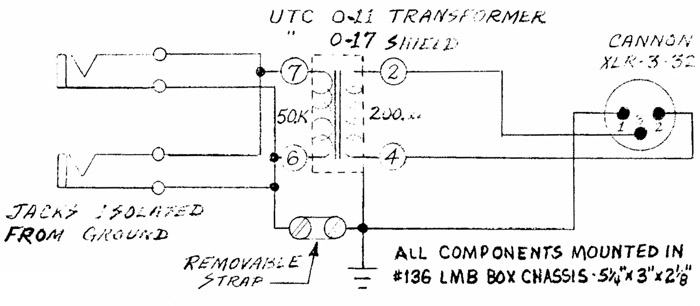From the archives of the late, great Recording Engineer/Producer (RE/P) magazine, this feature is an interesting look back at techniques for recording electronic instruments. This article dates back to April / May of 1970. (Volume 1, Number 1). The text is presented unaltered, along with all original graphics.
There are variations of three basic methods which seem to satisfy most requirements…that is, those requirements which don’t demand instant audio annihilation…for getting a signal out of an electronic musical instrument and its amplifier.
Assuming that the sound to be picked-up is generated by a fundamental electronic instrument, say, an electrified guitar, one without built-in reverberation, wah-wah or the like.
Then, there is no particular problem in coming directly off of the magnetic pick-up on the instrument into a mult-jack, with the dual feeds then going, on the one hand, to the guitar amplifier, while the other line, then, goes to the microphone input of the mixing console through an impedance matching transformer . . . Direct Box. (See figure 1)
The obvious advantages, here, are that the player has complete monitoring capability through his own amplifier in the studio, while the mixing engineer retains complete control of the output volume of the instrument in the control room.
Electronic instruments with built-in special effects; the fuzz tones, wah-wahs, reverbs, etc. are picked up directly in two additional ways.
If the amplifier being used by the musician in the studio has either a line-output or a pre-amp output the mult-jack approach is still where the process starts.
One line from the jack goes out through the impedance matching transformer (sometimes called a bridging transformer) straight to the microphone input of the control console. The mult feed from the jack goes back into the amplifier.
As in the previous example, the player still has complete liberty to monitor his own performance at any volume level in the studio. The use of any of the special effects originating in the instrument or the amplifier remains the choice of the artist. The engineer, on the other side of the glass, still has absolute control of the volume of the sound being recorded.
Although less desirable from the control-of-volume point of view of the engineer, the third method of direct pick-up is used because of its simplicity. This method looks pretty much the same as the immediately preceding set-up, except that a pair of clip leads are used to clip onto the voice coil of the amplifier speaker before going back into the bridging transformer and then on into the microphone input of the mixing console.
In this situation the player has the opportunity of “playing” with the amplifier volume controls, thus affecting the volume of sound fed to the mixer. To the degree that the performer might want to do this, the absolute control over the volume being fed to the tape machines is no longer vested completely in the engineer doing the mixing.
These techniques can be applied to almost every electronic instrument; electronic piano, electronic harpsichord, etc. In each case the signal must be fed through an isolating or bridging device (impedance matching device) into the mixing console, while at the same time allowing the musical signal to also get to the performer’s amplifier in the studio.
Direct signal pick-up eliminates distortion from both the amplifier and the speakers, which in musical instrument amplifiers are nowhere near the quality or balance of the studio monitoring system. Too, the recording system is not exposed to any extremely high sound power levels. Those remain safely isolated out in the studio.





















